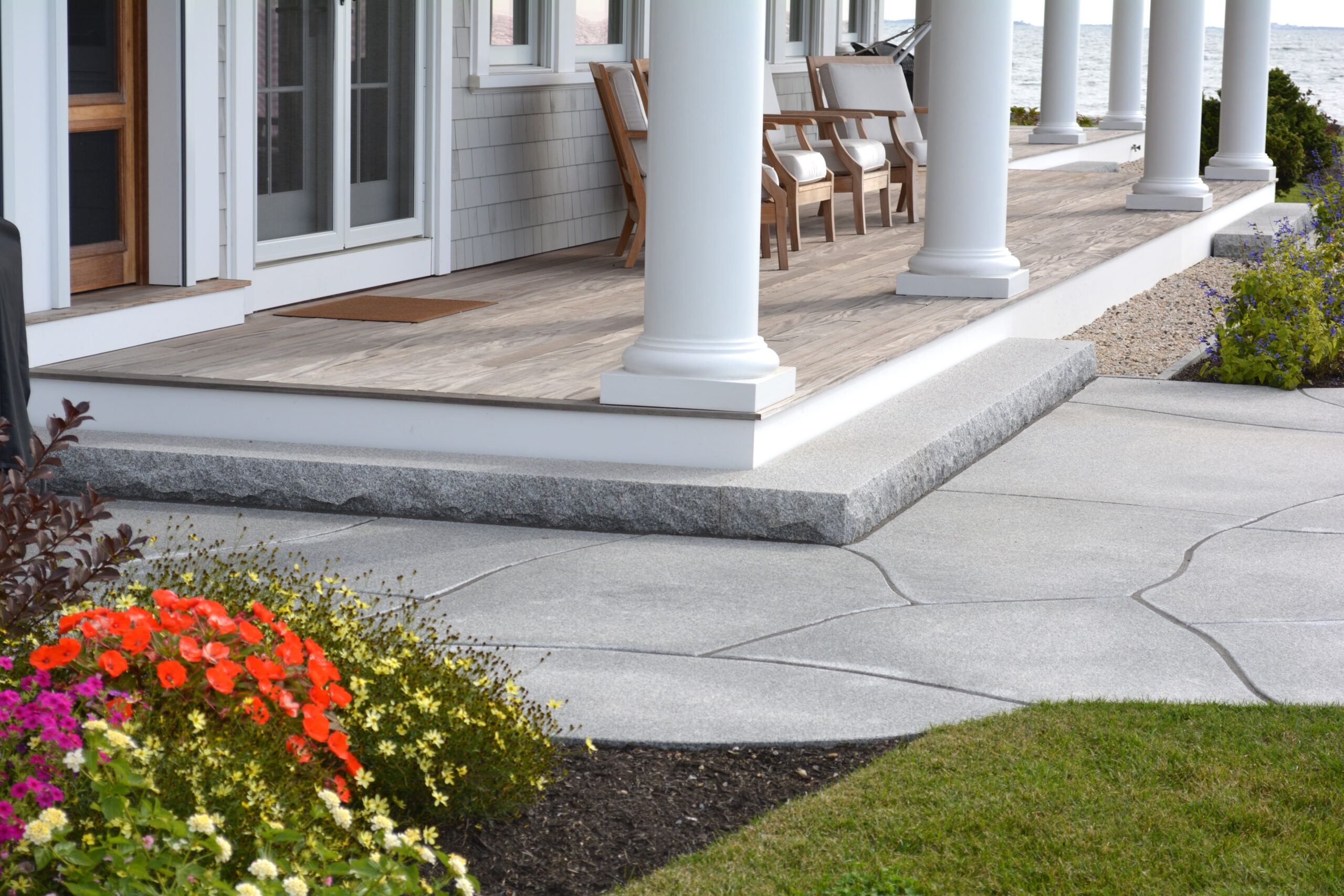Keeping Your New England Coastal Home Low Maintenance With Granite
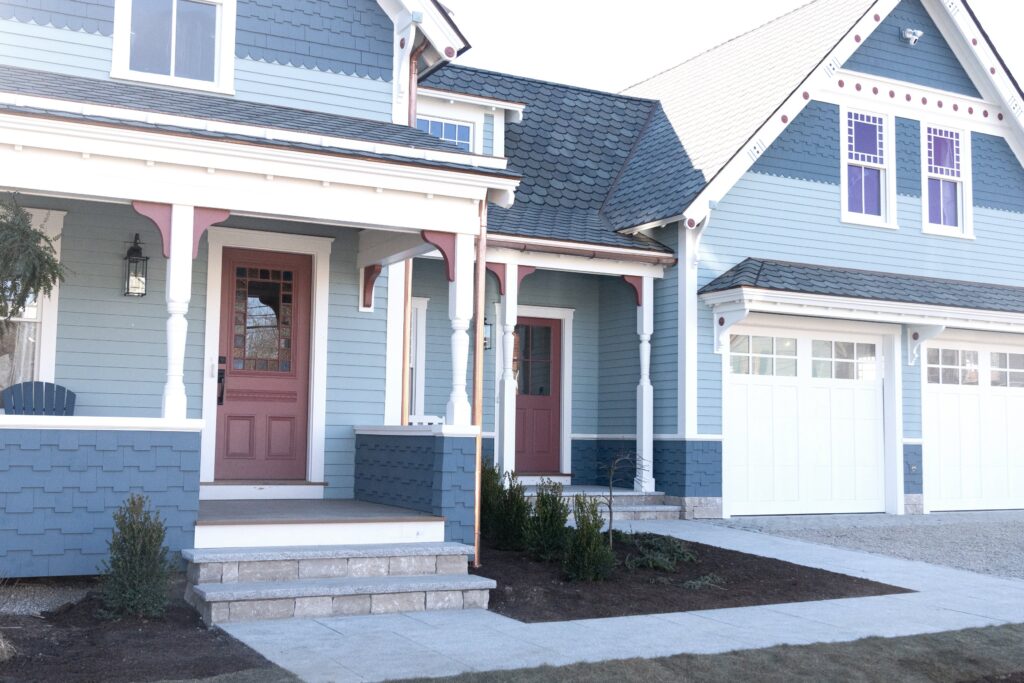
When you drive along the coast of New England, you can’t help but see rows of beautiful coastal homes. With their clean, crisp elegance, and some located in historical districts that tell the story of the area, they represent a certain lifestyle and the people who love it.
Matt Teague, President of Reef Builders, says he helps people make their coastal home dreams come true by planning, building and restoring some of these stately Cape Cod-style residences. He says homeowners in the area want a simple, clean coastal look that’s low maintenance. For that reason, he switched from brick to granite on many hardscape projects.
Durable and attractive, granite is the material that works best on New England Coastal homes where the hard freezes, moisture and wind can wreak havoc on lesser materials.

Woodbury Gray™ granite steps and custom-cut pavers. Project by Great Works Landscape.
Why Brick Isn’t Good on Coastal Homes
Teague says they used to traditionally use brick on a coastal home build, but they’ve switched to granite for better longevity and lower maintenance. He says a homeowner may not understand that brick isn’t durable enough to withstand the elements of the East Coast areas where these homes exist.
“Brick is porous, so it’s not really designed for horizontal applications such as steps and walkways where water will fall directly on it. The water gets absorbed into the brick, then you have the freeze-thaw cycle, and that can make the bricks crack and fall apart; this can happen as quickly as five years after installation, and it’s a major expense to repair.” Salt is another problem for brick, says Teague. “Salt can cause issues with the coloration of the brick and also damage the mortar and cause it to deteriorate.
-JPG.jpeg)
This retaining wall creates a stunning divide between the lawn and sea wall. Made from Saratoga granite regular wallstone, the wall ties together the design of the home with the natural elements surrounding it.
He adds that even the well-known wind in the area can cause issues for brick. “Constant wind can etch the bricks. It can wear them down very quickly. We’ve seen waterfront applications where the bricks look like they’ve been sandblasted, and that’s from sand from the beach getting blown against it. And there’s nothing you can do to fix it. You just have to replace it.”
“Granite is a solid product with high durability. It just takes all those issues off the table. We’ve never had a problem with the granite products we’ve used, not once.”
-jpg.jpeg)
Hallmarks of Cape Cod-style Coastal Homes
When looking to buy or build a New England Coastal-style home, Teague says there are architectural and landscaping details that tend to be consistent for the clean, classic Cape Cod-style look. They include:
- gable dormers
- porches
- shingle siding
- double-hand windows with shutters
- centralized chimneys
- simple exterior ornamentation
- flower beds with a lot of color but low maintenance
- granite steps, walkways, patio pavers, driveway edging, garage aprons, chimneys
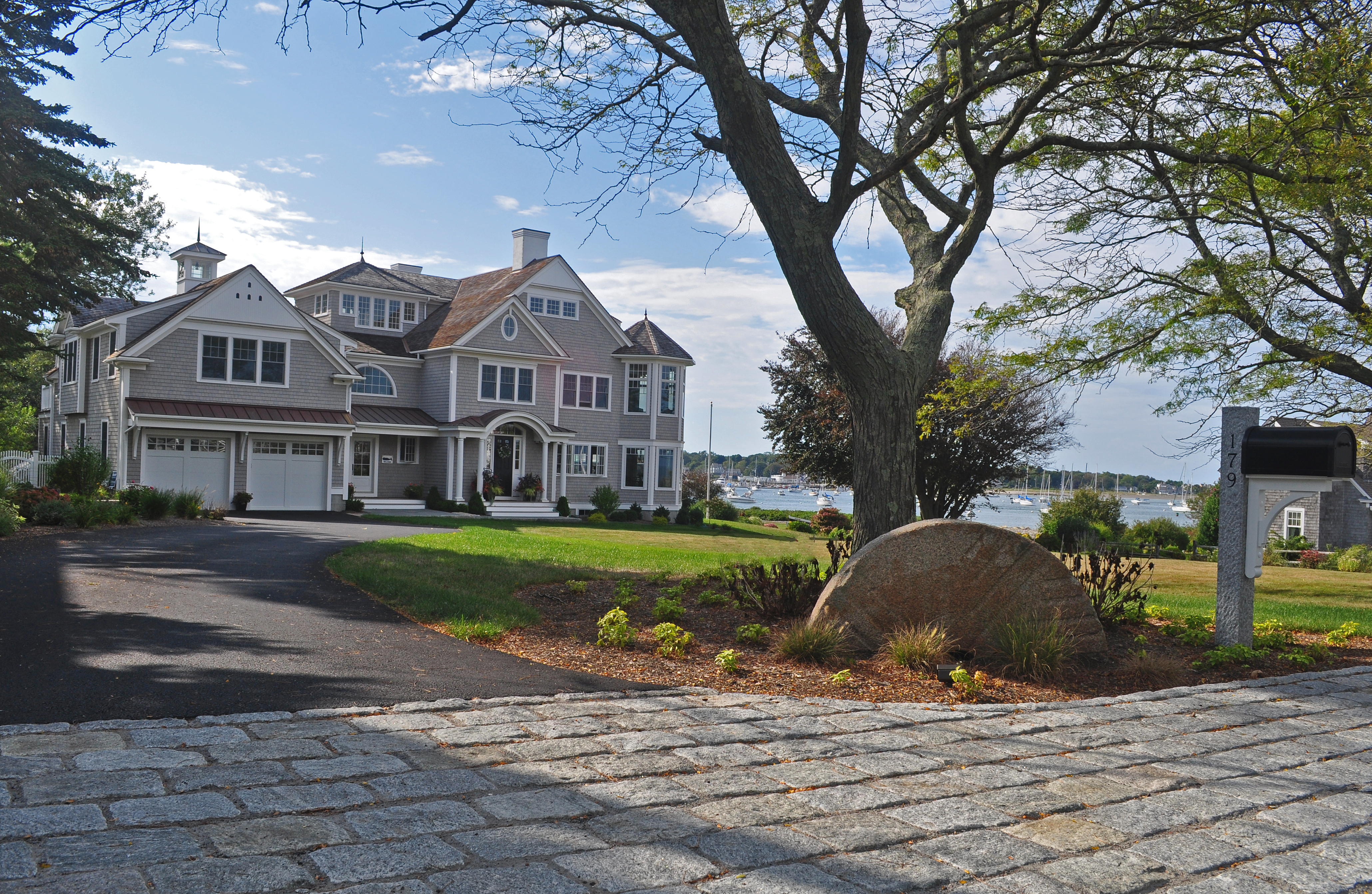
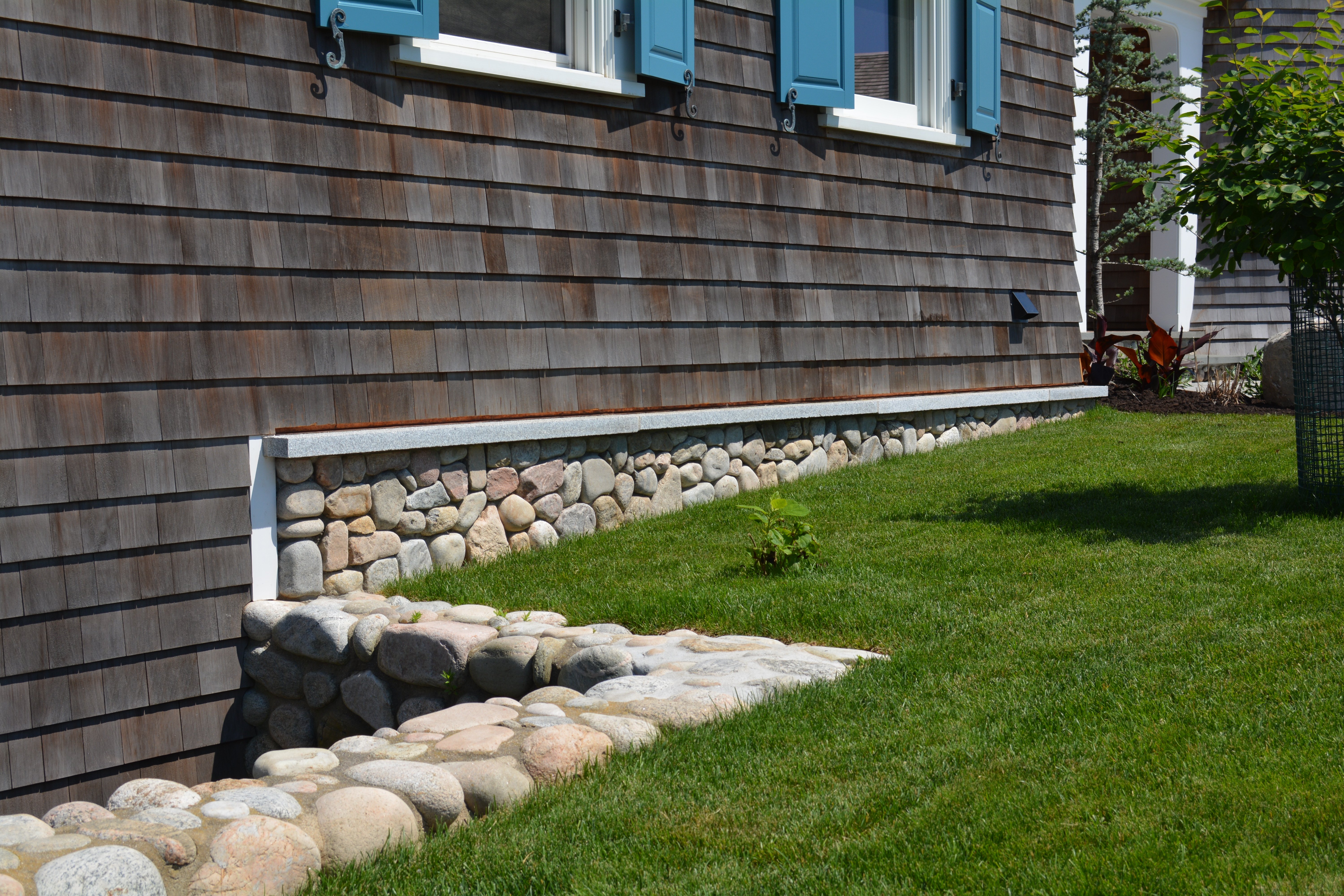
Teague says people want a house that’s built well and low maintenance. Owners don’t want to spend time on upkeep.
“They want to come down here, put their flip-flops on and think about the beach,” he says. That’s why granite is the perfect material for New England Coastal homes.
-JPG.jpeg)
Where to Use Granite Products on Coastal Homes
Some homeowners may lose objectivity when they’ve looked at their home over the years and do not know where to make improvements. Teague has a few suggestions.
“Steps, walkways, and patio pavers are a great opportunity to use granite,” he says. “There are granite veneer products that can be used on a foundation or sliced stone that can make decorative columns. We also use a lot of granite cobblestones to create driveway edging and garage aprons. We’ve done whole chimneys with a granite veneer on them. It’s a really great product anywhere that needs high durability, heat resistance and weather resistance.”
-jpg.jpeg)
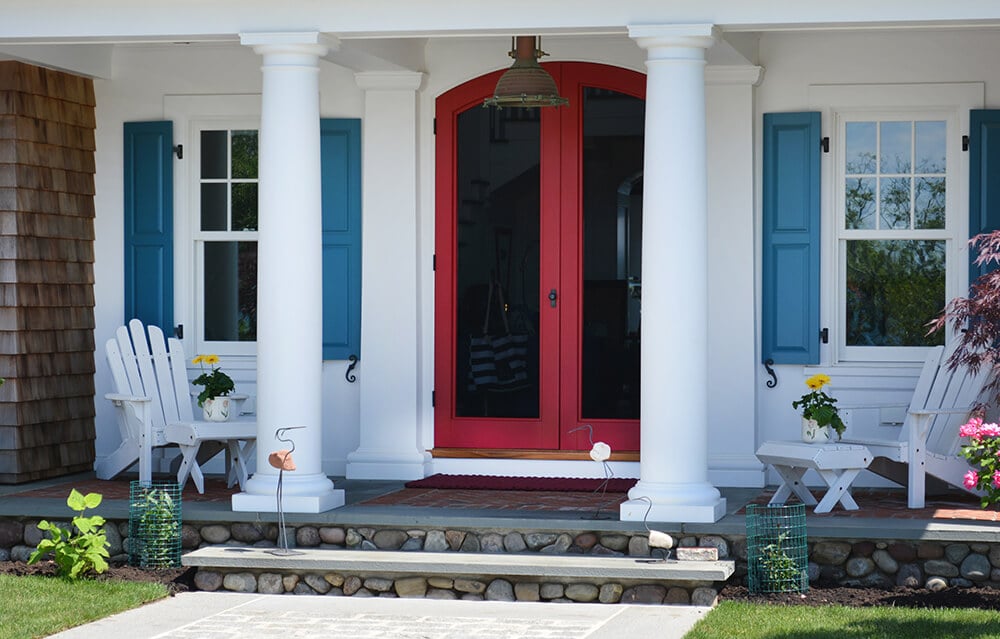
Bluestone treads with a thermal top and exposed edges.
Customizable Granite Options
While granite comes in several styles and finishes, Teague says Woodbury Gray™ is by far the most preferable.
“We use a lot of Woodbury Gray. It’s very uniform. It’s a nice light color; it doesn’t have a lot of movement in it; it’s very consistent.” There are also a variety of finishes available. “You can do a thermal finish, a smooth finish. You can carve anything you want into it. You can give the sides different edges like a chiseled look or very straight and uniform. The variety of options are great for our customers because we get different looks or meet a certain aesthetic with the same granite product,” he says.
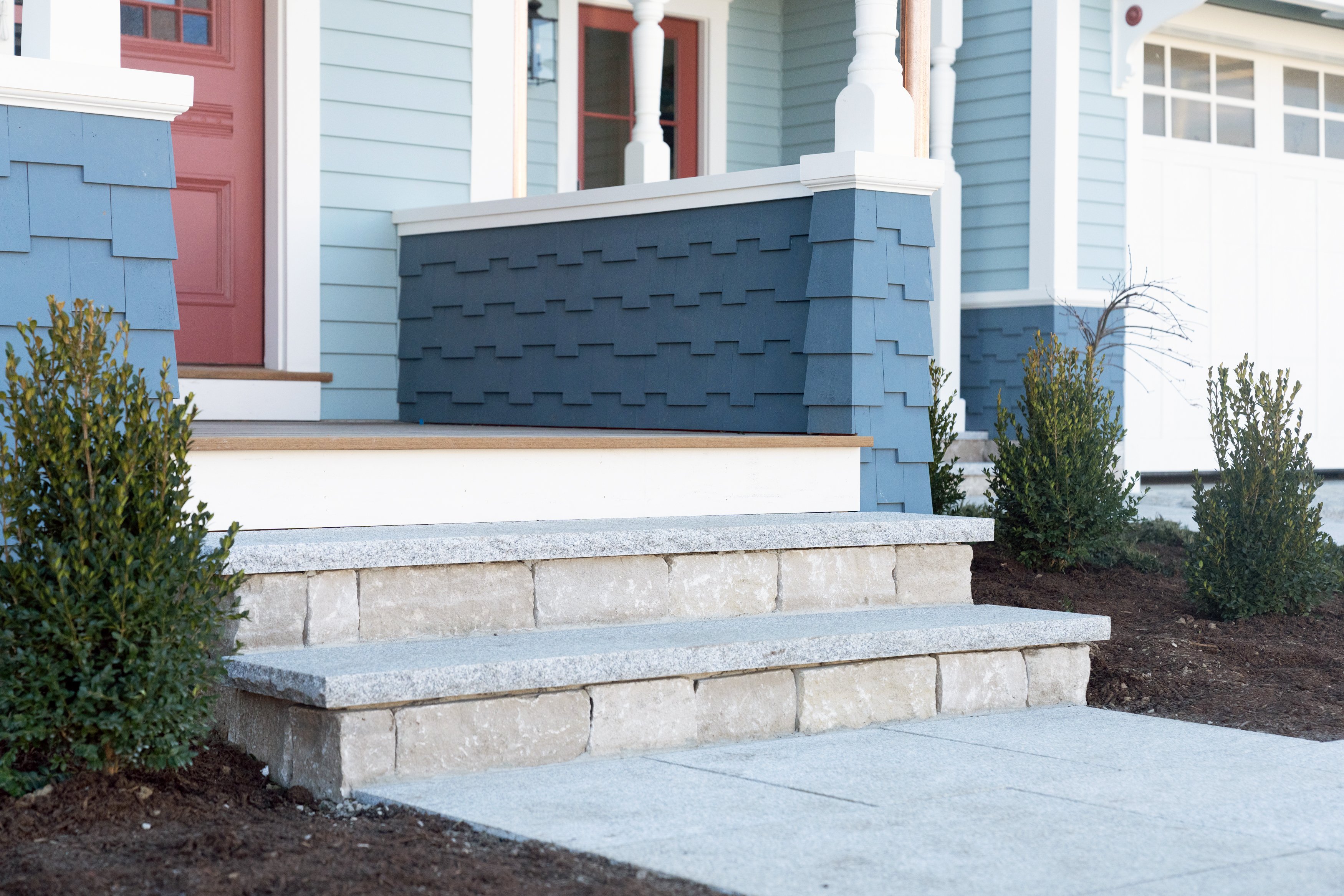
Rock face Woodbury Gray™ granite treads with a thermal top
Coastal Grandma Style
A big trend on social media is “Coastal Grandma Style,” an aspirational lifestyle that revolves around a signature look often seen in Diane Keaton films, such as wearing a lot of loose-fitting linen and living in a beautiful home on the coast with crisp, white interior décor, freshly cut hydrangeas and beachy accent décor such as driftwood, shells and coral.
“That sounds like most of our customers!” says Teague, who adds that many of his customers are nearing retirement, have high-end taste, and can afford a home on the coast. But he’s also now seeing younger people enter the market. “It’s probably the children or grandchildren of that coastal grandmother, and those themes carry through. They learned it from their family.” And these days, they may have also learned about it from online viral trends popularizing coastal homes, coastal interior design, and coastal fashion style.
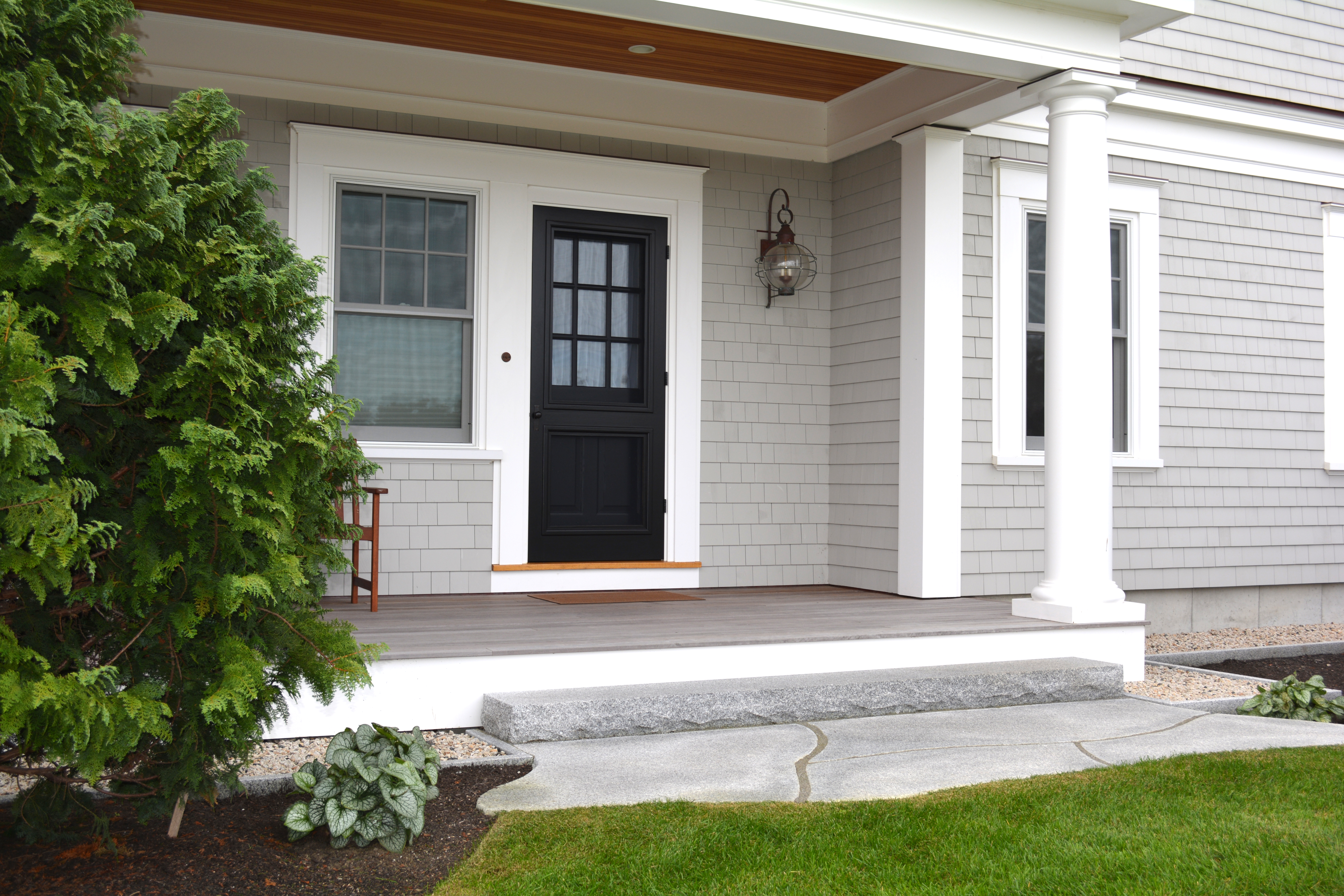
Rock face Woodbury Gray™ granite step with a thermal top
So if you’re looking to buy or upgrade a New England Coastal home, think granite. It’s long-lasting, low-maintenance and customizable—and will do your home justice with its beautiful aesthetic. Then kick back and enjoy your beachside life!
